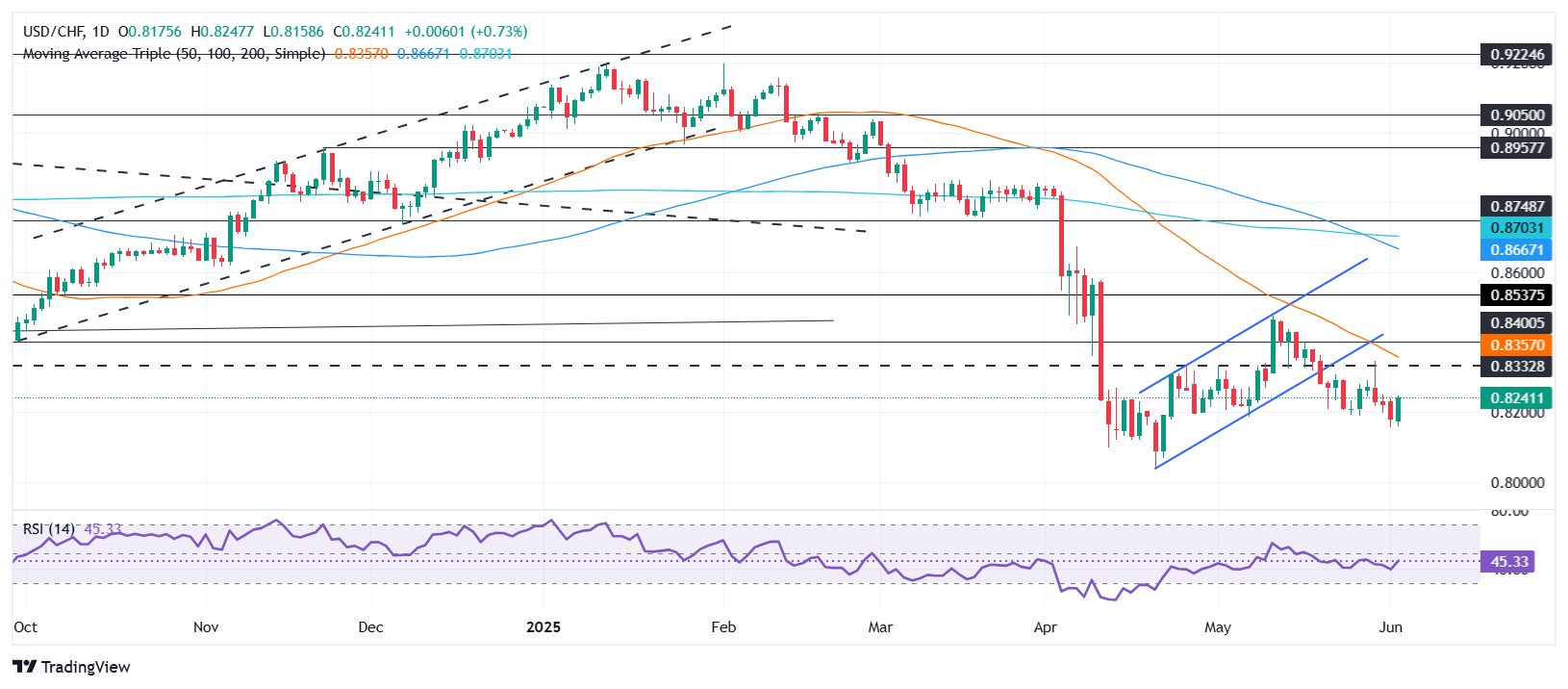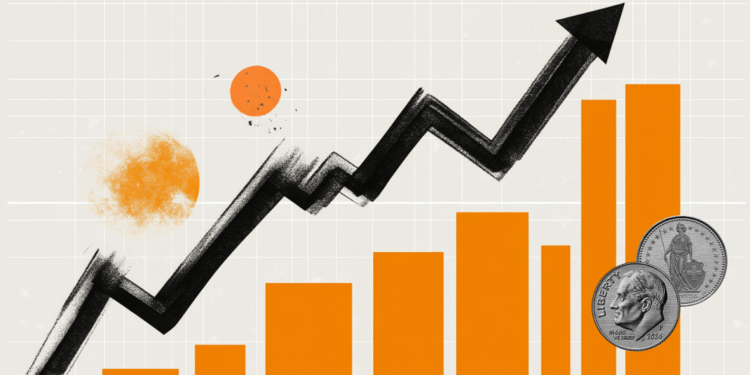- USD/CHF rebounds from 0.8155 on strong JOLTS data and renewed Dollar strength.
- Bullish engulfing candle hints at move to 0.8347, though trend stays bearish below 50-day SMA at 0.8351.
- Break below 0.8200 could target 0.8100, YTD low at 0.8083, and psychological 0.8000 level.
USD/CHF bounces off six-week lows of 0.8155 and surges past the 0.8200 figure as the Greenback is boosted by solid US jobs data, which is pushing the pair above its opening price by 0.26%.
USD/CHF Price Forecast: Technical outlook
The USD/CHF downtrend continues, but a possible formation of a ‘bullish engulfing’ candle chart pattern could pave the way for an upward move. Although the leg-up could rise and test the May 29 high at 0.8347, it would remain shy of turning the trend sideways.
This means that the series of successive lower highs and lower lows would be intact unless the USD/CHF clears the 50-day Simple Moving Average (SMA) at 0.8351. Once achieved, the next key resistance level would be 0.8400, and the May 12 high at 0.8475.
Conversely, a drop below 0.8200 could expose the 0.8100 mark, followed by the year-to-date (YTD) lows hit on April 21 at 0.8083. If that level is surpassed, the next stop would be the 0.8000 figure.
USD/CHF Price Chart – Daily

Swiss Franc FAQs
The Swiss Franc (CHF) is Switzerland’s official currency. It is among the top ten most traded currencies globally, reaching volumes that well exceed the size of the Swiss economy. Its value is determined by the broad market sentiment, the country’s economic health or action taken by the Swiss National Bank (SNB), among other factors. Between 2011 and 2015, the Swiss Franc was pegged to the Euro (EUR). The peg was abruptly removed, resulting in a more than 20% increase in the Franc’s value, causing a turmoil in markets. Even though the peg isn’t in force anymore, CHF fortunes tend to be highly correlated with the Euro ones due to the high dependency of the Swiss economy on the neighboring Eurozone.
The Swiss Franc (CHF) is considered a safe-haven asset, or a currency that investors tend to buy in times of market stress. This is due to the perceived status of Switzerland in the world: a stable economy, a strong export sector, big central bank reserves or a longstanding political stance towards neutrality in global conflicts make the country’s currency a good choice for investors fleeing from risks. Turbulent times are likely to strengthen CHF value against other currencies that are seen as more risky to invest in.
The Swiss National Bank (SNB) meets four times a year – once every quarter, less than other major central banks – to decide on monetary policy. The bank aims for an annual inflation rate of less than 2%. When inflation is above target or forecasted to be above target in the foreseeable future, the bank will attempt to tame price growth by raising its policy rate. Higher interest rates are generally positive for the Swiss Franc (CHF) as they lead to higher yields, making the country a more attractive place for investors. On the contrary, lower interest rates tend to weaken CHF.
Macroeconomic data releases in Switzerland are key to assessing the state of the economy and can impact the Swiss Franc’s (CHF) valuation. The Swiss economy is broadly stable, but any sudden change in economic growth, inflation, current account or the central bank’s currency reserves have the potential to trigger moves in CHF. Generally, high economic growth, low unemployment and high confidence are good for CHF. Conversely, if economic data points to weakening momentum, CHF is likely to depreciate.
As a small and open economy, Switzerland is heavily dependent on the health of the neighboring Eurozone economies. The broader European Union is Switzerland’s main economic partner and a key political ally, so macroeconomic and monetary policy stability in the Eurozone is essential for Switzerland and, thus, for the Swiss Franc (CHF). With such dependency, some models suggest that the correlation between the fortunes of the Euro (EUR) and the CHF is more than 90%, or close to perfect.

